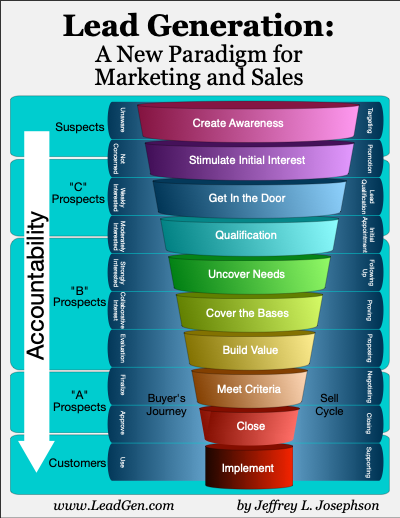What Is Lead Generation?
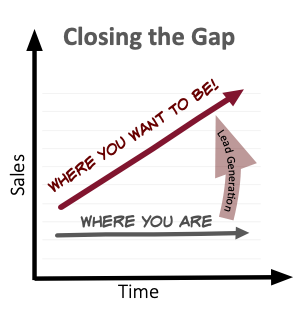
Lead Generation Is All about Closing the Gap
between "Where You Are" and "Where You Want to Be"
Is Lead Generation the Missing Link between Marketing and Sales?
For many businesses, Lead Generation - "LeadGen" for short - is more than just a Sales or Marketing function. It's the critical path item. This is because having an effective Lead Generation program - tasked with producing "qualified sales leads" - often determines whether a business will ultimately succeed or fail. [more]
Unfortunately, there are many misconceptions about Lead Generation, and about Marketing and Sales in general (including conflating Lead Generation with tactics such as telemarketing or advertising), that contribute to companies failing, or at least to their missing their revenue growth goals. [more]
A shortcut to understanding Lead Generation, its role and its value, is that if your Marketing programs are producing unqualified leads, and/or if your Sales program can't close enough sales, there's something wrong with your strategy - not just with your marketing mix. The specific cause will usually be unique to your company. But the solution can often be found in Lead Generation - a process that not only fills the gaps between (and within) your Marketing and Sales functions, but is supraordinate to them, shown below. [more]
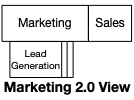
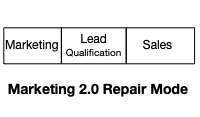
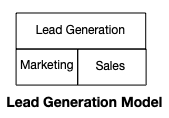
Accountability Matters
The need to consider a LeadGen approach is usually motivated by a failure somewhere in the Sell Cycle. But it becomes critically important when everybody does what they're supposed to do and yet - somehow - the company fails to meet its revenue goals. [more]
To understand Lead Generation as a strategy - what it is, why you should implement it, where it fits, and how to execute it effectively - it helps to start by framing Lead Generation within the context of your company's Sell Cycle, with a typical B2B example shown below, overlaid with the levels in the Sales Funnel.
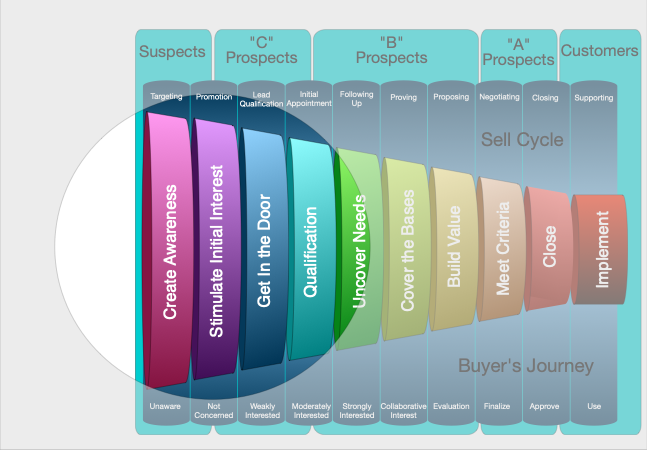
A Typical B2B Sell Cycle, Overlaid on the Sales Funnel Model
As described by Miller and Heiman in their classic book "Strategic Selling", for most businesses the goal of Marketing and Sales is to get prospects into the top of the sales funnel (or, in the version above, on the left), and have profitable, closed sales come out the bottom (i.e. out the right side, above). [more]
Where Lead Generation comes in is in initiating and driving the front end of the Sell Cycle. That is, if a company needs to produce 'qualified sales leads' - opportunities where there is a reasonable and manageable chance for the company to successfully close a sale, then all four initial steps at the front-end of that Sell Cycle, at least - (1) creating awareness, (2) stimulating interest, (3) getting in the door, and (4) qualifying the prospect - should be done using an integrated Lead Generation strategy.
Without an integrated approach and the accountability that it enables, you can easily end up with finger-pointing, and a failure to achieve your revenue goals. In fact, arguably, accountability for the quality of that effort also extends LeadGen's role even farther into the Sell Cycle as a secondary focus. [more]
From the perspective of the tools that a business typically has available (shown in the bottom row), the Lead Generation function often involves targeting (e.g. market research, list selection, media buying, content development), promotion (e.g. advertising, telemarketing, social media marketing, SEO, events), lead qualification (e.g. conversioning, screening, questioning), and engagement (e.g. appointment-setting, demos) - after which the opportunity is usually placed in the hands of a salesperson to continue the lead's journey through the Sales Funnel (unless it gets kicked back). [more]
LeadGen Can Fill Your Sales Funnel with Opportunities That Close
Ultimately, there are two primary reasons why the LeadGen process enables accountability where other approaches fail. First, as shown above, the LeadGen process is linked, by definition, directly to specific steps in the Sell Cycle. And, equally important, the Lead Generation process holds itself accountable for the downstream requirements of the Sell Cycle, not just simply to its own phase's deliverables. Second, the principal KPI of the LeadGen process is the Expected Value (EV) of the Sales Funnel - which is effectively the company's sales forecast, as shown below.

If the LeadGen function can accurately predict revenues (in addition to actually creating opportunities), this represents a major risk reduction for the enterprise. [more]
In short, an effective Lead Generation function is uniquely capable of creating opportunities and driving them into and through the Sell Cycle - the lifeblood of any business.
And when it comes to Sales and Marketing, that's the only thing that matters.
"Lead Generation: A New Paradigm for Marketing and Sales" will teach you everything you need to know in order to develop a successful marketing and sales program!
